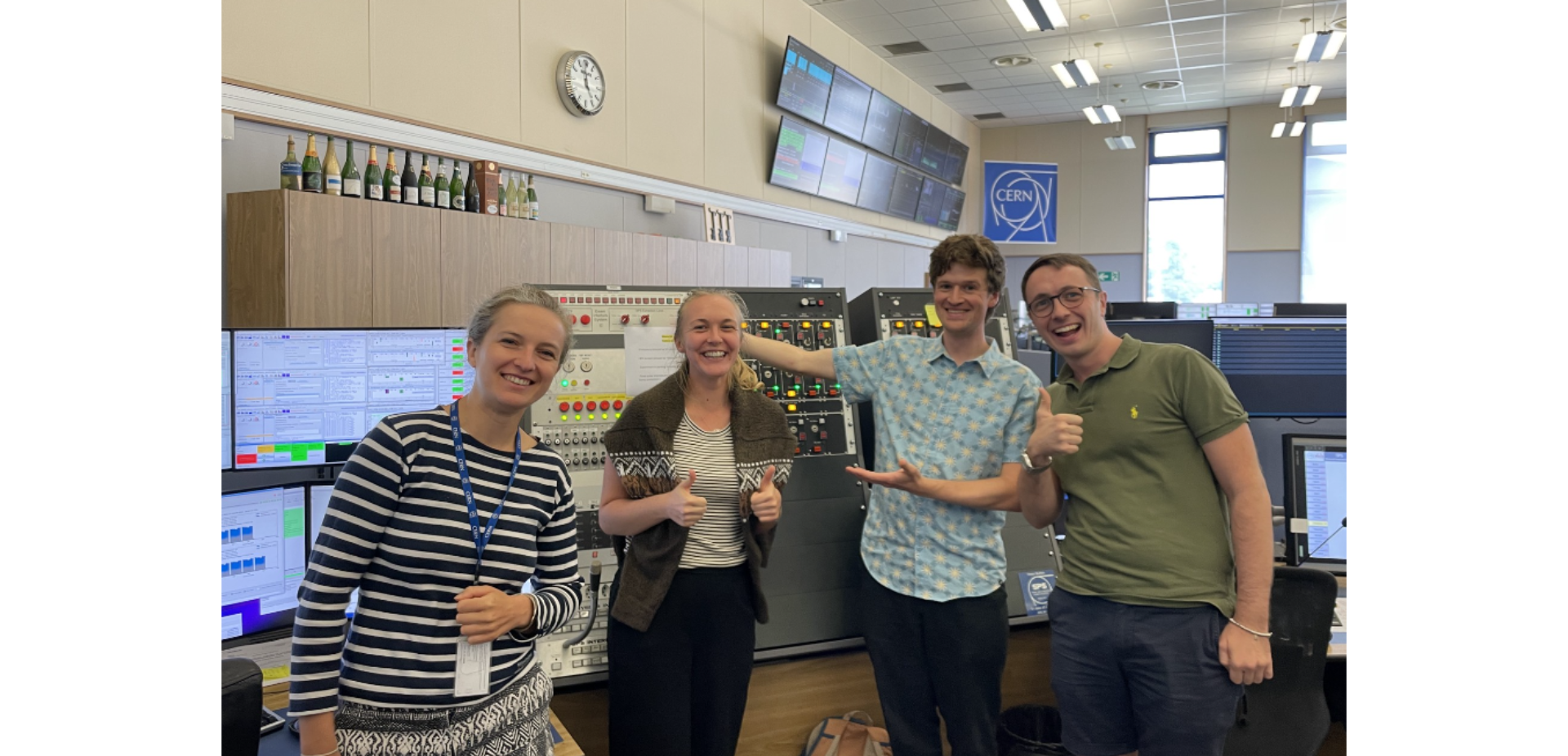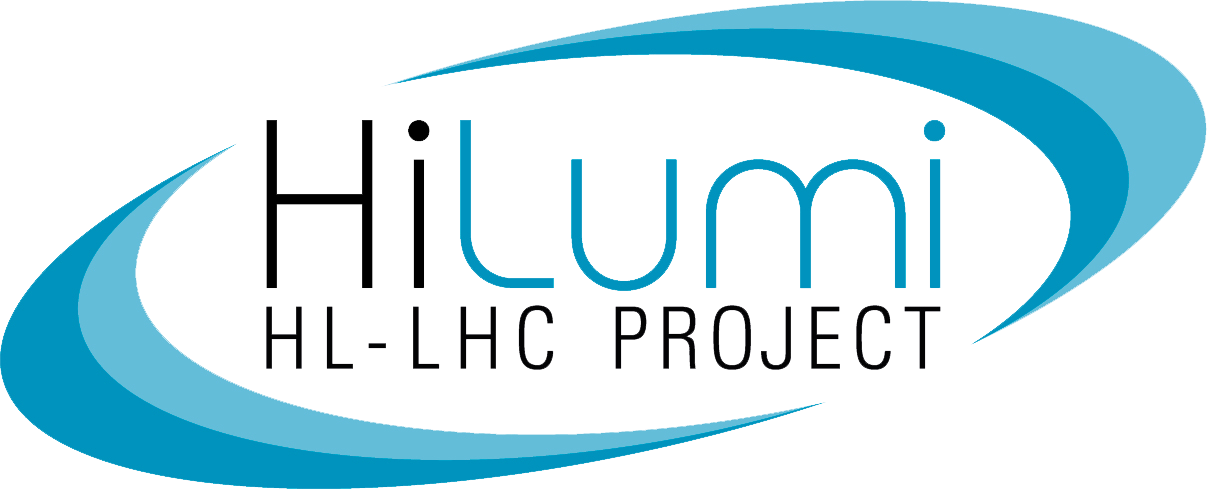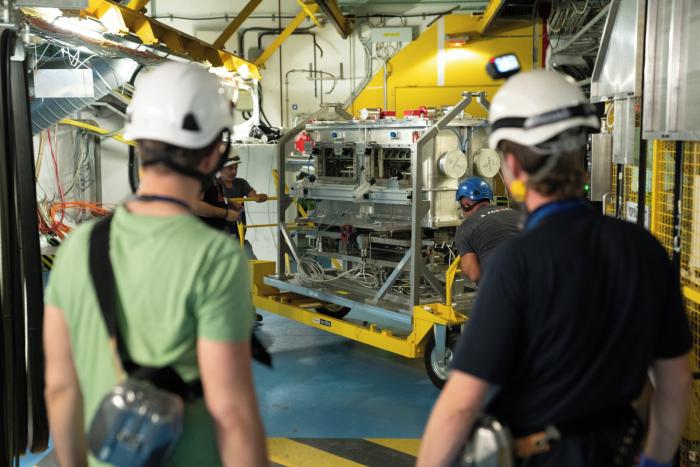By Gabriel Banks and Nicola Solieri (CERN)
The 65th HiRadMat experiment (HRMT-HLTDE) was completed by the SY-STI team on the 14th August 2024. This experiment is a crucial step in validating the material selection for the HL-LHC beam dumps (TDEs) in HL work package 14 and is the product of around 12 months of ideation and planning.
In the LHC beam dumps, the energy stored in the proton beams must be safely absorbed by the core materials. Due to their exceptional thermal shock and radiation resistance, carbon-based materials have been successfully used for this purpose since LHC Run 1. In the HiLumi era, the maximum stored energy in each LHC beam will be approximately 4.5 times greater than in Run 1, placing correspondingly greater demands on the core materials. The HRMT-HLTDE experiment aimed to test different candidate carbon-based materials by subjecting them to beam impacts that replicate HiLumi operational conditions. This included testing materials previously used as well as Carbon Fibre Reinforced Carbon composites, which are expected to offer several advantages in this application. This test is the key qualification criterion for two Market Surveys; candidate materials proposed by producers from CERN member states must pass this test to qualify.
The experiment would not have been possible without the support of CERN technicians, engineers, and physicists from multiple groups who collaborated to design, produce, assemble, and align the mechanical components - and install the instrumentation, actuation, and gas systems required. The design ensured the material specimens were securely and precisely positioned, with a controlled argon atmosphere and with continuous monitoring provided by integrated instrumentation. A pulse list was meticulously developed, using four different beam sizes and carefully chosen intensities to simulate the four operational scenarios necessary for achieving the experiment’s objectives.
Over the course of two weeks, the pulse list was successfully completed in full. Despite facing various challenges, the team adapted and developed real-time strategies to meet the objectives and ensure the experiment’s safe completion.
The next stage will be removing the setup from the HiRadMat tunnel after a radiation cooldown period, dismantling it, and analysing the effects of the beam impacts on the materials. This analysis will involve both Computed Tomography (CT) scans and visual microscopy. Materials that show any signs of degradation that could compromise their effectiveness as core materials for the HL TDEs will be excluded from further consideration.

Related photo collections:
Installation on 19 July 2024
Dismantling on 10 September 2024

